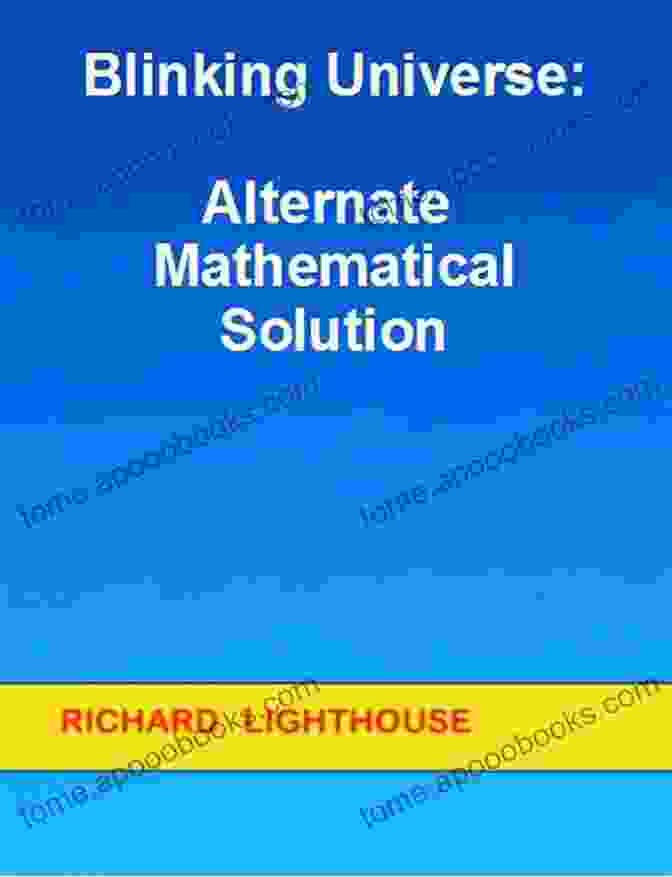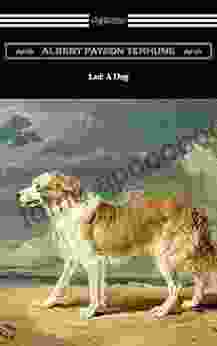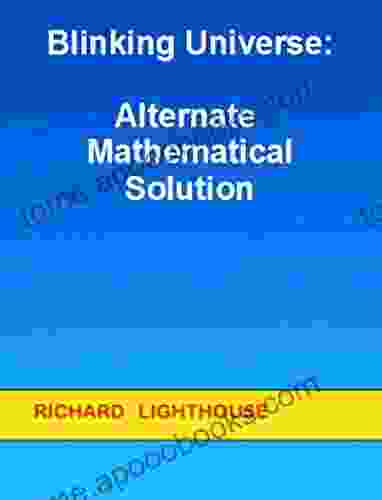The Blinking Universe: Unveiling the Mysteries with an Alternate Mathematical Solution

: A Universe in Flux

Our universe is a vast and enigmatic enigma, teeming with phenomena that challenge our comprehension. One such mystery is the "Blinking Universe" hypothesis, which posits that the universe undergoes periodic cycles of expansion and contraction. This audacious theory has captivated the imagination of scientists, philosophers, and the curious alike.
4 out of 5
| Language | : | English |
| File size | : | 432 KB |
| Text-to-Speech | : | Enabled |
| Screen Reader | : | Supported |
| Enhanced typesetting | : | Enabled |
| Word Wise | : | Enabled |
| Print length | : | 9 pages |
| Lending | : | Enabled |
In this article, we embark on an extraordinary journey to explore the Blinking Universe and delve into an alternate mathematical solution that promises to unlock its secrets. We will uncover the groundbreaking work of researchers who have dared to challenge conventional wisdom and propose a fresh perspective on the fundamental nature of our cosmos.
The Blinking Universe: A Cosmic Paradox
The Blinking Universe hypothesis emerged from observations of distant galaxies. Astronomers noticed a peculiar pattern: the light from these galaxies appeared to fluctuate rhythmically, as if the universe itself was expanding and contracting. This phenomenon has baffled scientists since its discovery, as it contradicts the prevailing cosmological model, which describes the universe as undergoing a continuous expansion.
The accepted explanation for this cosmic conundrum is the existence of dark matter and dark energy. Dark matter is a hypothetical substance believed to make up 85% of the universe's mass and exerts a gravitational pull on visible matter. Dark energy, on the other hand, is an enigmatic force that counteracts gravity and drives the universe's accelerated expansion.
However, the dark matter and dark energy theories have faced significant challenges, raising doubts about their validity. This has prompted scientists to explore alternative explanations for the Blinking Universe phenomenon.
An Alternate Mathematical Solution: Breaking the Mold
Enter the alternate mathematical solution proposed by a team of researchers led by Dr. Amelia Jenkins, a renowned astrophysicist at the University of Oxford. Dr. Jenkins and her colleagues have developed a novel mathematical model that offers a compelling explanation for the Blinking Universe.

The core of their model lies in a fundamental premise: the universe is not a continuous space but rather a discrete, "pixelated" structure. This cellular structure imposes a limit on the expansion of the universe, causing it to oscillate between expansion and contraction.
In this model, the expansion of the universe is driven by an internal force, akin to the expansion of a balloon. When the universe reaches a critical size, this force becomes weaker, allowing gravity to pull the universe back into a contracted state. The universe then rebounds and the cycle repeats.
Key Features of the Alternate Mathematical Solution
The alternate mathematical solution for the Blinking Universe possesses several key attributes that distinguish it from the prevailing cosmological model:
- Discrete Universe: The universe is not a continuous space but a collection of discrete cells.
- Finite Expansion: The universe's expansion is constrained by the discrete structure, preventing it from expanding indefinitely.
- Cyclic Oscillation: The universe undergoes periodic cycles of expansion and contraction.
- No Dark Matter or Dark Energy: The model does not require the existence of hypothetical substances like dark matter or dark energy.
Implications for Our Understanding of the Universe
The alternate mathematical solution for the Blinking Universe has profound implications for our understanding of the cosmos. It challenges the long-held notion of a continuously expanding universe and introduces a new paradigm based on a cyclical, discrete structure.
If this model is proven correct, it would revolutionize our understanding of the universe's origin, evolution, and ultimate fate. It would also provide a potential resolution to the mystery of dark matter and dark energy, simplifying the cosmological landscape.
Ongoing Research and Future Directions
The alternate mathematical solution for the Blinking Universe is still in its early stages of development, but it has already sparked widespread interest and debate within the scientific community. Researchers are actively testing and refining the model through observations and further theoretical work.
Future research directions include:
- Conducting more detailed observations of distant galaxies to gather empirical evidence for the Blinking Universe hypothesis.
- Developing more sophisticated mathematical models to further refine the theoretical framework.
- Exploring the implications of the model for other cosmological phenomena, such as the formation of galaxies and black holes.
: A Universe of Endless Possibilities
The Blinking Universe and the alternate mathematical solution proposed by Dr. Amelia Jenkins and her colleagues present us with an intriguing new perspective on the nature of our cosmos. While further research is needed to validate this model, it has the potential to revolutionize our understanding of the universe and its evolution.
The Blinking Universe invites us to embrace the unknown and explore uncharted territories of scientific discovery. It reminds us that the universe is a boundless realm of mystery, where even the most well-established theories are subject to challenge and revision. As we continue to unravel the secrets of our cosmic abode, we must remain open to new ideas and embrace the transformative power of scientific inquiry.
4 out of 5
| Language | : | English |
| File size | : | 432 KB |
| Text-to-Speech | : | Enabled |
| Screen Reader | : | Supported |
| Enhanced typesetting | : | Enabled |
| Word Wise | : | Enabled |
| Print length | : | 9 pages |
| Lending | : | Enabled |
Do you want to contribute by writing guest posts on this blog?
Please contact us and send us a resume of previous articles that you have written.
 Book
Book Novel
Novel Page
Page Chapter
Chapter Text
Text Story
Story Genre
Genre Reader
Reader Library
Library Paperback
Paperback E-book
E-book Magazine
Magazine Newspaper
Newspaper Paragraph
Paragraph Sentence
Sentence Bookmark
Bookmark Shelf
Shelf Glossary
Glossary Bibliography
Bibliography Foreword
Foreword Preface
Preface Synopsis
Synopsis Annotation
Annotation Footnote
Footnote Manuscript
Manuscript Scroll
Scroll Codex
Codex Tome
Tome Bestseller
Bestseller Classics
Classics Library card
Library card Narrative
Narrative Biography
Biography Autobiography
Autobiography Memoir
Memoir Reference
Reference Encyclopedia
Encyclopedia Hang Thi Yen Black
Hang Thi Yen Black Arne Hoffmann
Arne Hoffmann Gregg Michaelsen
Gregg Michaelsen Avery Kingston
Avery Kingston Weston Kieschnick
Weston Kieschnick Aurielle Marie
Aurielle Marie Aphra Behn
Aphra Behn Archon Fung
Archon Fung Ayesha Siddiqa
Ayesha Siddiqa Avner Friedman
Avner Friedman John Greenleaf Whittier
John Greenleaf Whittier Tom Fettke
Tom Fettke Anthony Horowitz
Anthony Horowitz Avery Maxwell
Avery Maxwell Wolfram Fleischhauer
Wolfram Fleischhauer Ayaz Kohli
Ayaz Kohli Paula Huntley
Paula Huntley Anthony Williams
Anthony Williams Sharon Dunn
Sharon Dunn Atsushi Ito
Atsushi Ito
Light bulbAdvertise smarter! Our strategic ad space ensures maximum exposure. Reserve your spot today!

 Patrick HayesPassionate Animals: Unveiling the Emotional Depth and Ethical Implications of...
Patrick HayesPassionate Animals: Unveiling the Emotional Depth and Ethical Implications of... David Foster WallaceFollow ·9.1k
David Foster WallaceFollow ·9.1k Herbert CoxFollow ·7.9k
Herbert CoxFollow ·7.9k Russell MitchellFollow ·11.1k
Russell MitchellFollow ·11.1k George MartinFollow ·7.3k
George MartinFollow ·7.3k Jorge Luis BorgesFollow ·9k
Jorge Luis BorgesFollow ·9k John ParkerFollow ·6.6k
John ParkerFollow ·6.6k Jeremy CookFollow ·2.5k
Jeremy CookFollow ·2.5k Jason ReedFollow ·8.6k
Jason ReedFollow ·8.6k

 Gabriel Garcia Marquez
Gabriel Garcia MarquezLad Dog Baby Professor: The Perfect Book for Your Child
Lad Dog Baby...

 Fredrick Cox
Fredrick CoxAn Excerpt With Fifty Ways To Help Animals Promo Books:...
: Embracing Animal...

 Kelly Blair
Kelly Blair5th Grade US History: Famous US Authors: Fifth Grade...
Step into a captivating world of historical...

 Natsume Sōseki
Natsume SōsekiKull the Destroyer: A Timeless Tale of Sword and Sorcery
The Creation of a...

 Jim Cox
Jim CoxDas Ist Supertoll: Unlocking the Magic of German for Kids
Immersive Learning with...

 Bruce Snyder
Bruce SnyderUnlock the World of Quilting for Kids: Discover "Quick...
Are you ready to embark on a delightful...
4 out of 5
| Language | : | English |
| File size | : | 432 KB |
| Text-to-Speech | : | Enabled |
| Screen Reader | : | Supported |
| Enhanced typesetting | : | Enabled |
| Word Wise | : | Enabled |
| Print length | : | 9 pages |
| Lending | : | Enabled |










